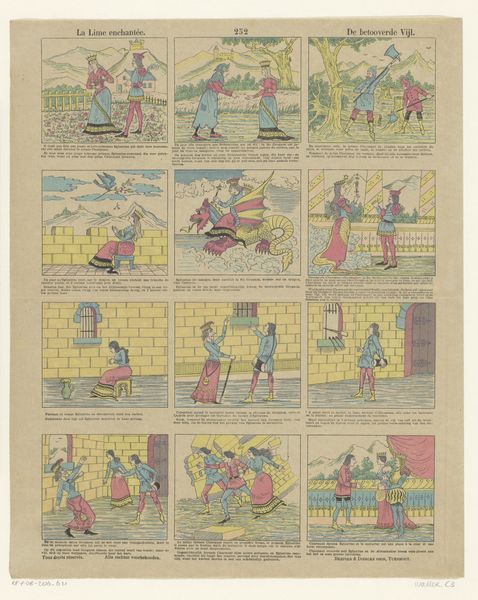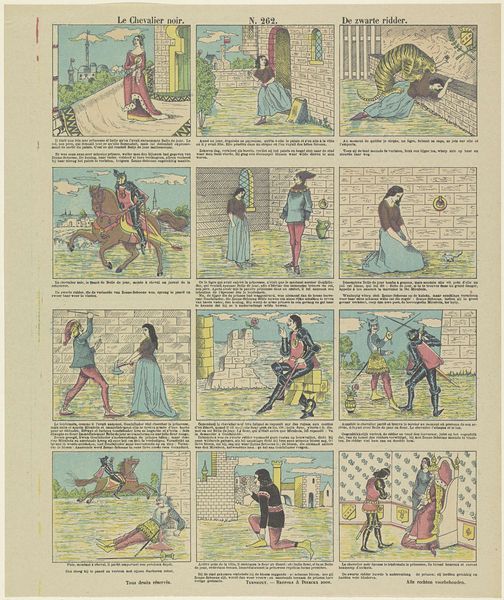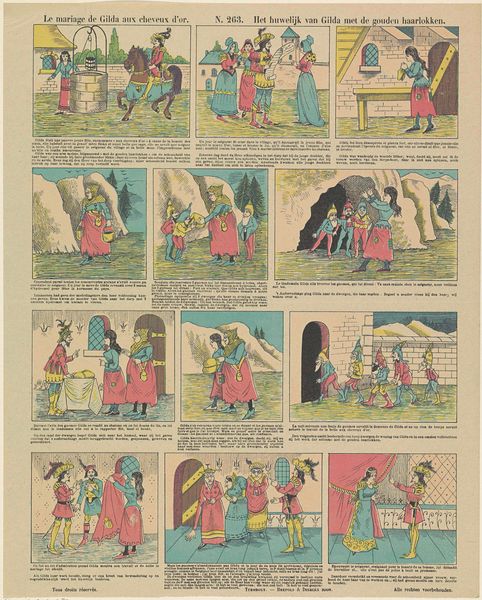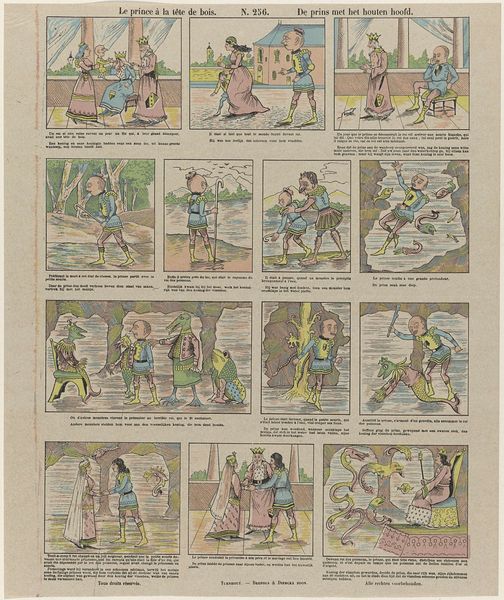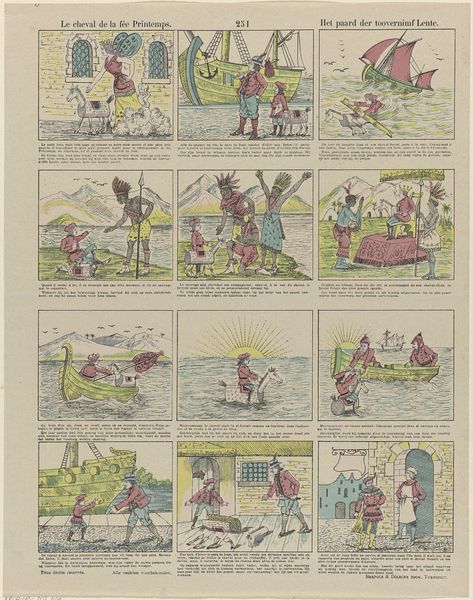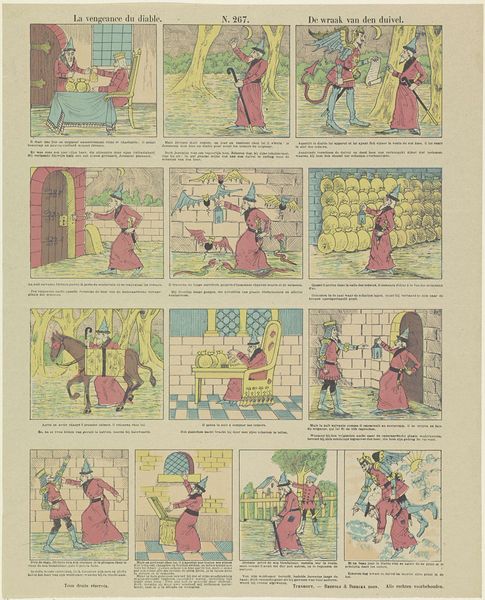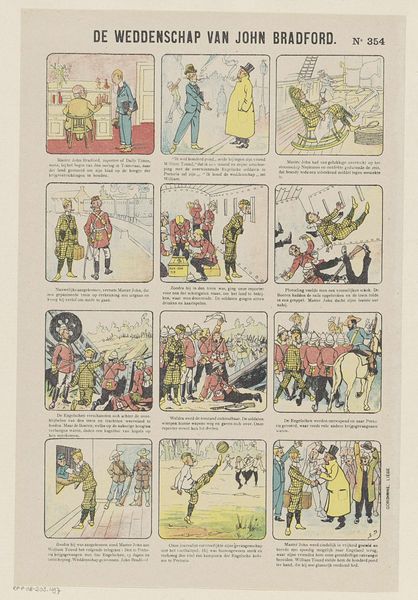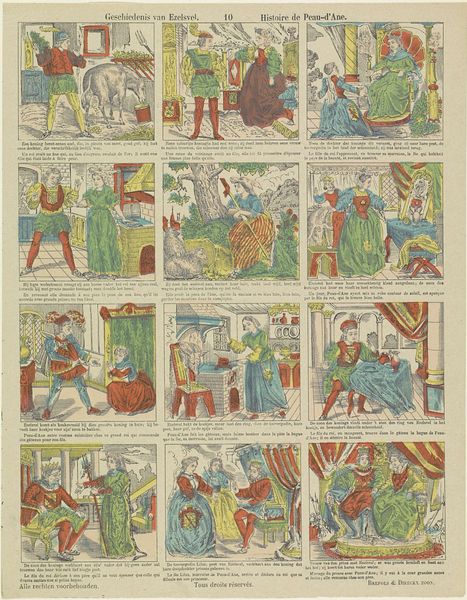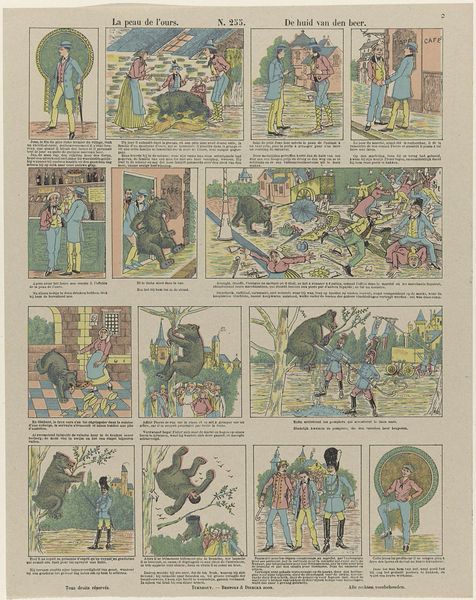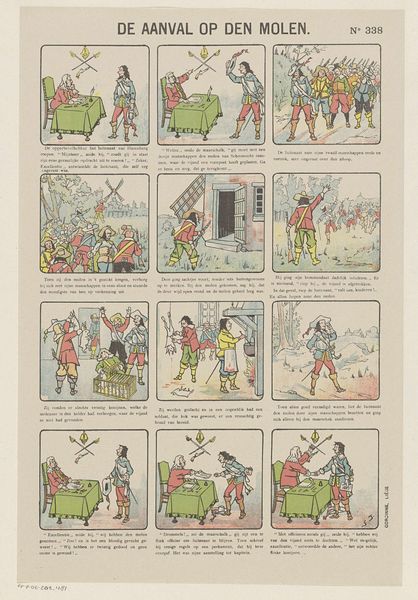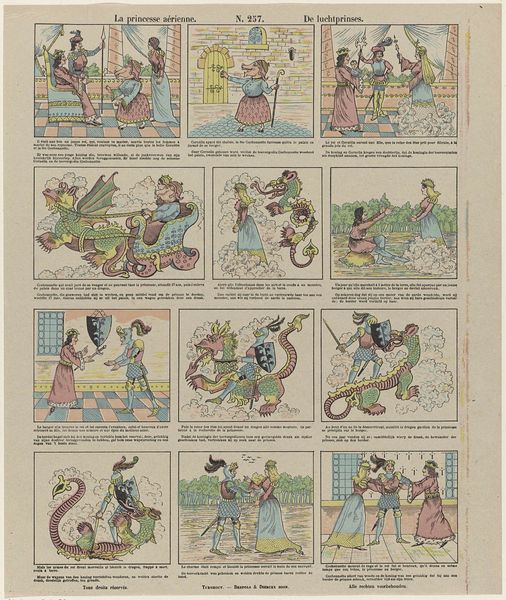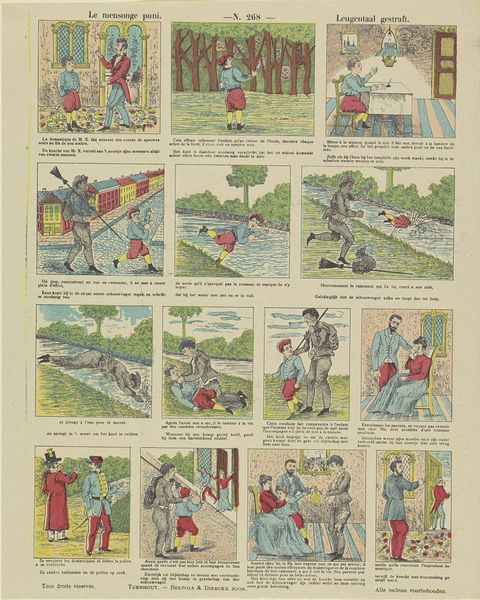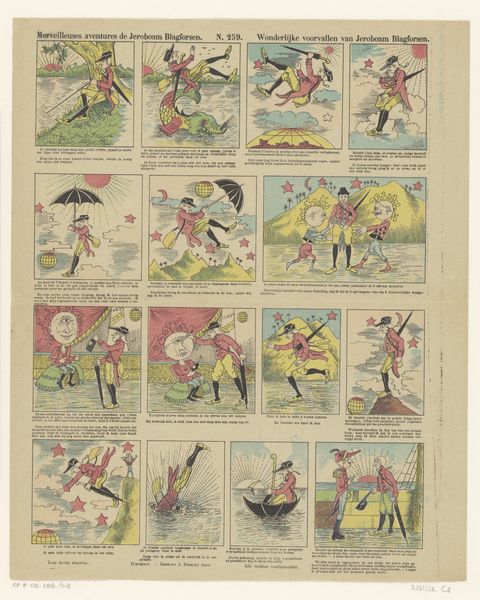
Merveilleuses aventures de Nicolas Poucet / Wonderlijke voorvallen van Niklaas Poucet 1833 - 1911
0:00
0:00
graphic-art, print
#
graphic-art
#
narrative-art
# print
#
comic
Dimensions: height 380 mm, width 300 mm
Copyright: Rijks Museum: Open Domain
Editor: This is a printed comic strip called "Merveilleuses aventures de Nicolas Poucet," or "Wonderlijke voorvallen van Niklaas Poucet," dating from 1833 to 1911, and is currently held at the Rijksmuseum. It reminds me of old fairy tales with its simple colors and clear narrative panels. What strikes you about this piece? Curator: What I find compelling is how this ostensibly innocent comic strip might subtly reflect the social anxieties and power dynamics of its time. The clear-cut narrative, the almost caricatured depictions of authority figures – how might these elements function as commentary on class structures and governance in 19th-century society? Do you think this accessible format makes potentially subversive ideas more palatable to a wider audience? Editor: That's an interesting perspective! I hadn't considered the potential for social critique within what seems like a straightforward adventure story. I guess the repetition of the protagonist being put in a precarious position makes me think of working-class conditions? Curator: Exactly! The figure of Nicolas Poucet, repeatedly subjected to trials and tribulations, can be seen as a symbol of resilience in the face of adversity. Think about the cultural context of the 19th century: the rise of industrialization, shifting social hierarchies. How does the artist navigate these complex issues through visual storytelling, and, even more crucially, what does their chosen method tell us about how they would want such complex and potentially controversial subjects received? Editor: It makes you wonder what conversations it sparked amongst readers then, right? Looking at this, I’m beginning to appreciate the subtle power of even seemingly simple narratives to reflect and shape societal understanding. Thank you. Curator: Indeed. Analyzing popular art forms like these provides valuable insight into the collective consciousness and unspoken tensions of a particular era. It also reveals a through-line for today's artistic activist voices as well.
Comments
No comments
Be the first to comment and join the conversation on the ultimate creative platform.
